Process Controller Design Exercises
 |  |  |  |
|---|
Exercise 1: Feedforward or Feedback
Classify the following as either feedforward or feedback controllers. The first letter is an abbreviation for the physical property measured or controlled such as T=Temperature, P=Pressure, F=Flow, A=Analyzer (concentration), and C=Concentration. The second letter is T=Transmitter or C=Controller.
Controller 1
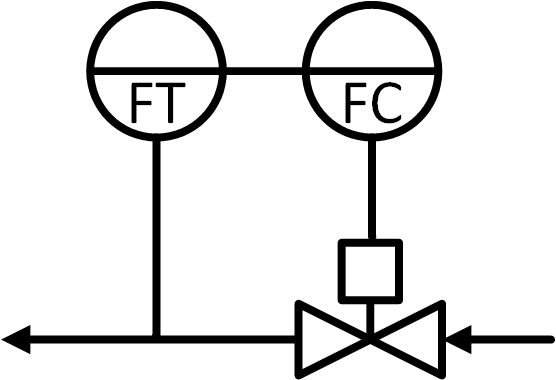
Controller 2
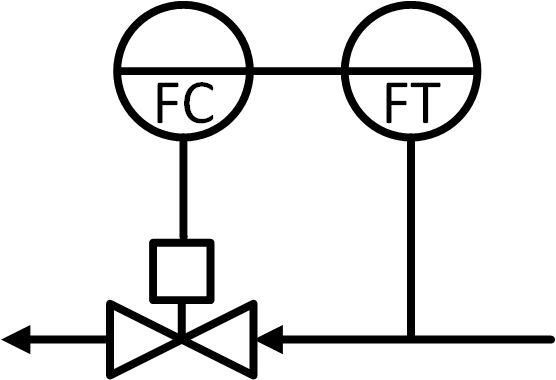
Controller 3
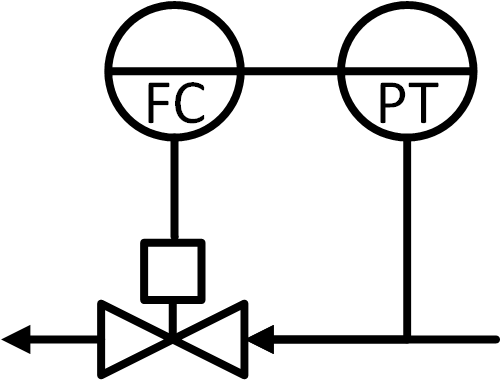
Exercise 2: Surge Tank
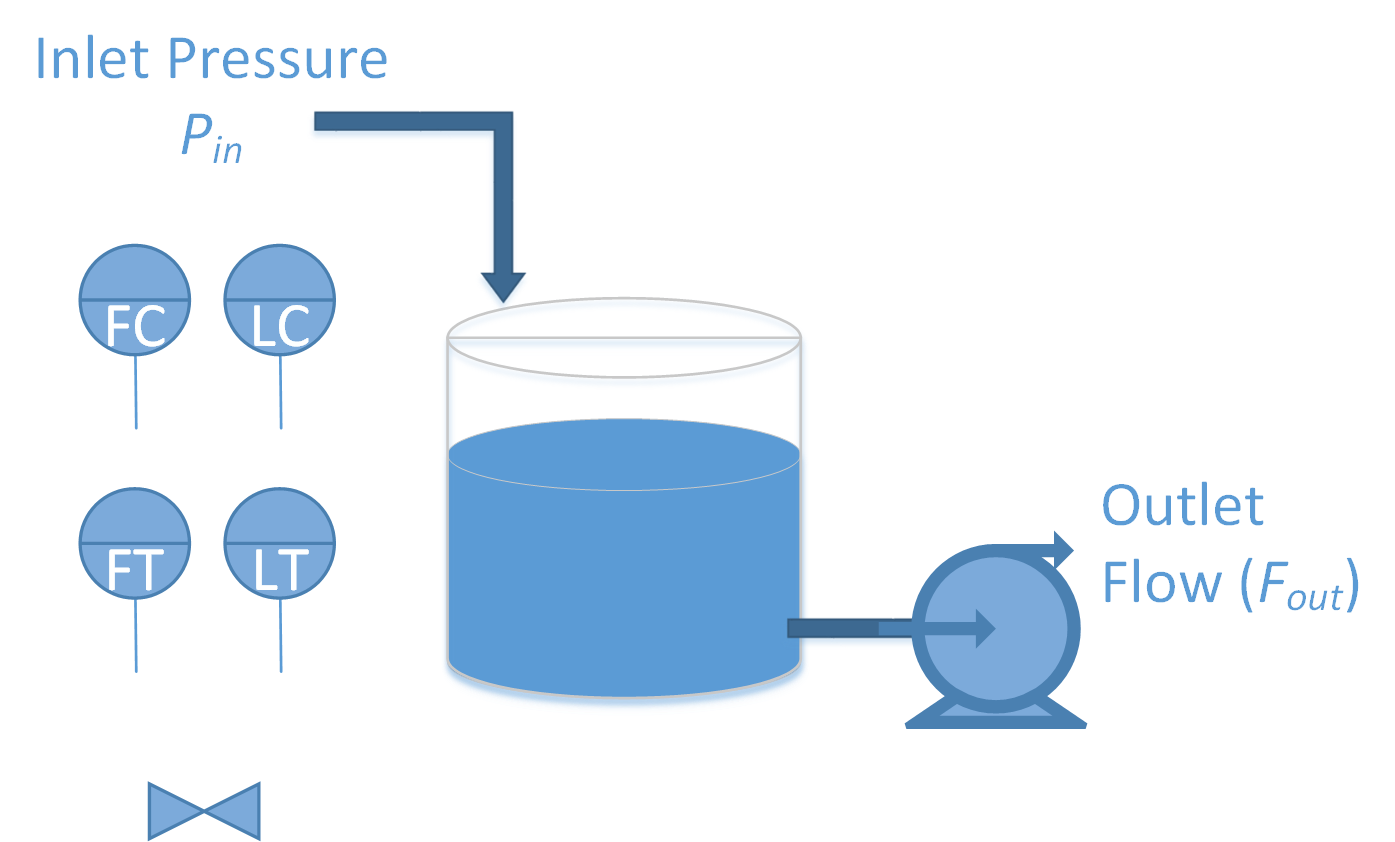
A surge tank is designed to absorb fluctuations in a process flow to a downstream unit. Changes with the inlet pressure cause the inlet flow to change rapidly and in a cyclic manner. The surge tank fills and drains but an overfill leads to wasted product and complete drainage of the tank damages the outlet pump. The outlet pump should be designed to provide constant flow to the downstream processing equipment regardless of the height of the fluid in the tank. Design two feedback control systems to maintain a constant outlet flow and moderate the level in the tank to be within acceptable level limits. For each system, discuss how a sensor (measurement), actuator (valve or pump), and feedback control are used to address the control problem. Create a schematic diagram and block diagram for each feedback controller.
Exercise 3: Scrubbing Reactor
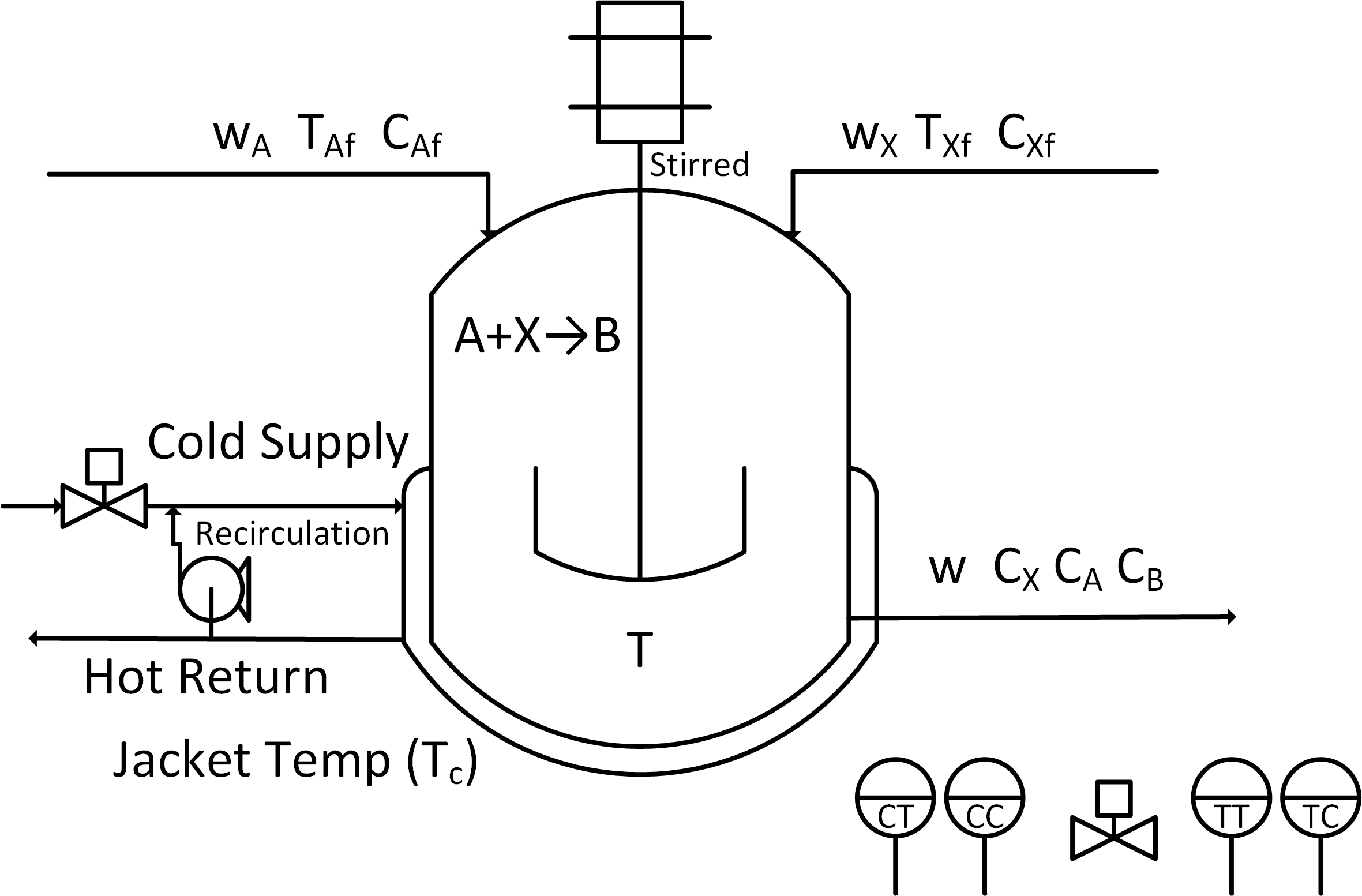
A liquid effluent stream from a plant contains an environmentally undesirable component X. X is a regulated substance so that the maximum amount (kg/year) that can be released into the environment has a set limit. In additional to the total amount, regulations also set a maximum concentration for X in a liquid stream released into the environment. Both the flow rate of the effluent stream and the concentration of X in the stream vary with time. It is proposed that this stream be cleaned up by feeding it into a CSTR where it would be exothermically reacted with component A to form an environmentally friendly product B according to the following reaction:
$$A + X \to B$$
Component A, however, is expensive. The control objective is to maintain the effluent concentration of X at a level (set point) which will satisfy the environmental requirements while using as little A as possible. Hence, the controlled variable is the concentration of X leaving the reactor. Propose a control system that includes a feedback controller with a feedforward element for the operation of the reactor.
The following questions may be useful to address this problem.
- How might a sensor (measurement), actuator (valve or pump), and feedback control be used to address this control problem? Draw a schematic diagram for the feedback control.
- What are possible disturbance variables? How might a sensor (measurement), actuator (valve or pump), and feedforward control strategy be used to lessen the impact of a disturbance? Draw a schematic diagram and block diagram that includes the feedback and feedforward control.
- What are the advantages and disadvantages of the feedforward and feedback strategy compared to only a feedback or feedforward strategy?
- If concentration is measured, what potential problems does concentration measurement cause? A gas chromatograph is a common sensor for composition.
Exercise 4: Olefin Furnace
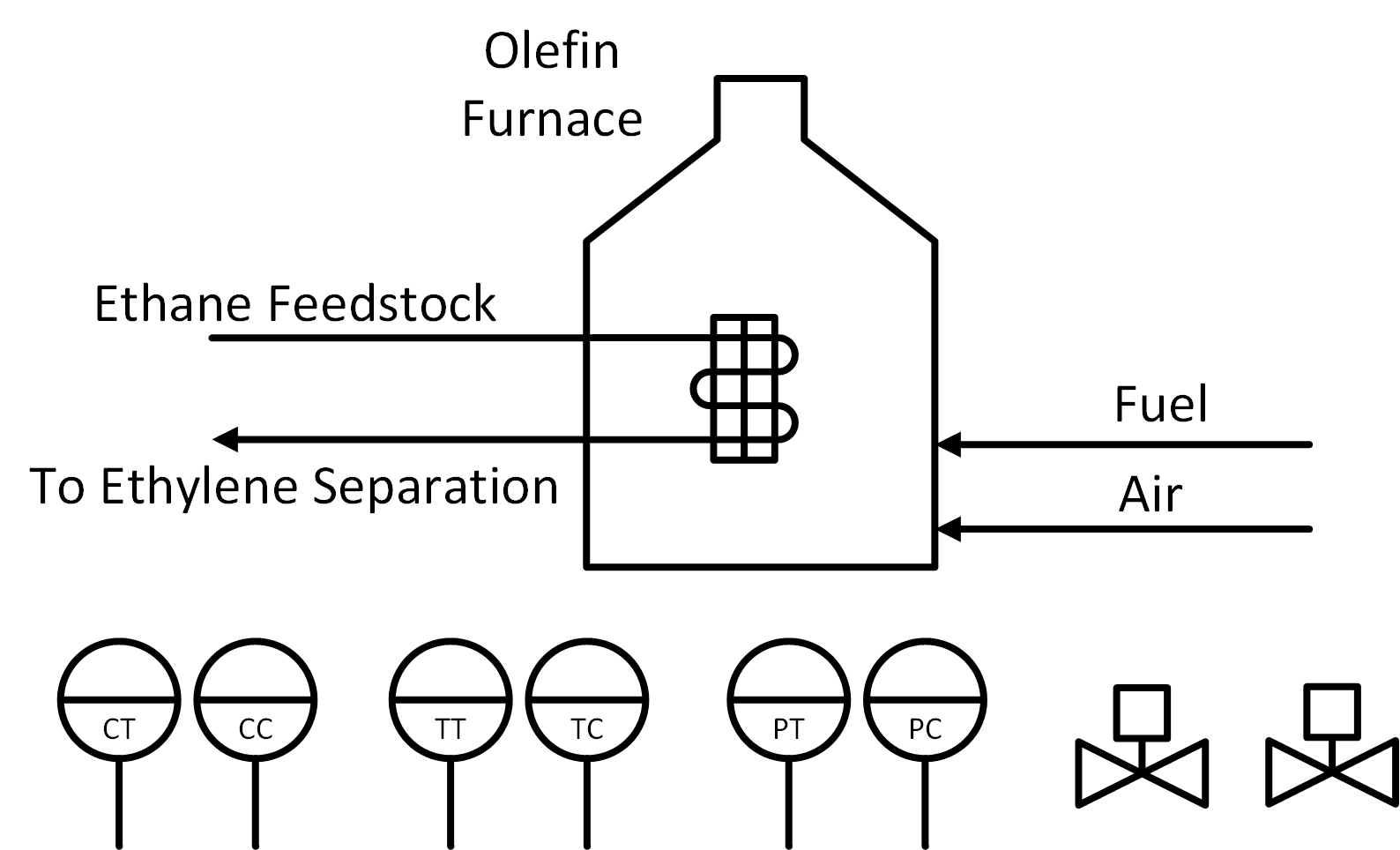
An olefin furnace is used to convert an ethane-propane mixture into a product stream rich in ethylene and propylene. The product stream is sent to an ethylene separation unit. Air and fuel are fed to the olefin furnace that heats the ethane feedstock to a specified temperature set point. To maximize olefin production, the temperature in the tubes should be tightly controlled even with changes in ethane feedstock composition and flow rate. The mixture of air and fuel should also be kept at a specified ratio.
- How might a sensor (measurement), actuator (valve or pump), and feedback control be used to address this control problem? Draw a schematic diagram and block diagram for the feedback control.
- What are possible disturbance variables? How might a sensor (measurement), actuator (valve or pump), and feedforward control strategy be used to lessen the impact of a disturbance? Draw a schematic diagram and block diagram for the feedforward control that is added to the feedback controller.
- What are the advantages and disadvantages of the feedforward and feedback strategy compared to the feedback only strategy?
Solution